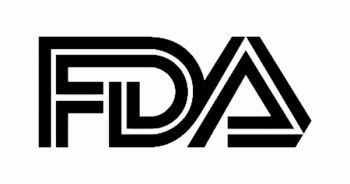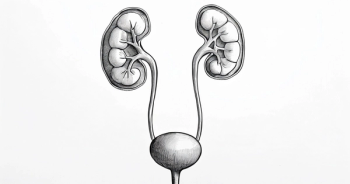
ICT01 Boosts AML Remission and Survival in EVICTION Trial
Abhishek Maiti, MD, discussed the EVICTION trial in AML and results presented during the 2025 American Society of Clinical Oncology (ASCO) Annual Meeting.
Results from the ongoing phase 1/2a EVICTION study (NCT04243499) of ICT01 in combination with azacitidine and venetoclax (Venclexta) for newly diagnosed acute myeloid leukemia (AML) are encouraging, demonstrating a complete response (CR) rate of 74% in older/unfit patients.
This result nearly doubles the historical CR rates observed with azacitidine and venetoclax alone. Furthermore, the preliminary 9-month overall survival rate of 83% for patients receiving the optimal 10-mg dose of ICT01 suggests a significant improvement in clinical outcomes.
The safety profile of this triple combination has also been manageable, with immune-related adverse events being infrequent and readily controlled with premedication and other toxicities consistent with the known profile of azacitidine and venetoclax.
In an interview with Targeted OncologyTM, Abhishek Maiti, MD, assistant professor of leukemia at The University of Texas MD Anderson Cancer Center and principal investigator in the EVICTION study, further discusses the trial and results presented during the
Targeted OncologyTM: How does ICT01’s T-cell activation differ from other AML immunotherapies?
Maiti: So far, we have always known that AML is a tumor that is susceptible to immune surveillance and eradication, but we simply hadn't found the right way to go about it with all the different immunotherapies we have evaluated. In hindsight, we now understand that those approaches may not have been involved significantly in immune surveillance and eradication for AML.
For example, checkpoint inhibitors like PD-1, PD-L1, CTLA-4, and other CD47 agents are trying to take the brakes off the immune system, either off alpha-beta CD4/CD8 T cells or macrophages. But in AML, we now understand that there is profound immune exhaustion and senescence. So even if we take the brakes off the immune system, there may not be gas in the car, so to speak, for the car to move forward and derive that immunological benefit.
In contrast, we now know from over 2 decades of clinical data in the US and Europe that gamma-delta T cells, particularly the γ9δ2 subtype, have a significant role in immune surveillance, especially in graft-vs-leukemia effects posttransplant, with significant improvements in relapse-free and overall survival in patients who have better recovery of γ9δ2 T cells posttransplant. Until now, we did not have a way to harness that biology.
With ICT01, instead of being a checkpoint inhibitor, it activates γ9δ2 T cells by binding to BTN3A and bypassing the physiological mode of activation. This leads to γ9δ2 T-cell activation and direct cytotoxicity against leukemia. These cells, being part of the innate immune system, also influence other immune bystanders like [natural killer (NK)] cells [and] CD4/CD8 T cells to remodel the immune microenvironment and generate a broader anti-leukemia effect.
What was the rationale behind combining ICT01 with azacitidine and venetoclax?
There are multiple layers of synergy between ICT01 and azacitidine and venetoclax. There's synergy between azacitidine and ICT01, venetoclax and ICT01, and also between azacitidine and venetoclax itself. The synergy between hypomethylating agents and immunotherapies is based on upregulation of epigenetically silenced tumor antigens and other targets like NKG2D ligands, which make leukemia cells more visible and susceptible to immune attack. The synergy between ICT01 and venetoclax lies in BCL-2 inhibition lowering the apoptotic threshold of AML cells, increasing their probability of death from immune attack. That’s been shown by multiple groups, and we are harnessing that here.
Additionally, azacitidine and venetoclax lead to cytoreduction and eradication of leukemia, improving the effector-to-target ratio. That is, we have more activated immune cells and fewer leukemia cells, which further enhances the synergy with ICT01.
What were the methods and design of the EVICTION trial?
This was a phase 1/2a trial where we evaluated 2 doses (10 mg and 75 mg) in a randomized fashion to assess safety, efficacy, and biomarkers. Previously, ICT01 was evaluated as a single agent in relapsed/refractory hematologic malignancies and lymphomas. In this frontline study, we randomized patients to the 2 dose levels in combination with azacitidine and venetoclax to determine which might be the ideal dose to move forward with.
What trends are emerging in overall survival as the data matures?
Overall survival is still a bit early to assess, as the median follow-up in the data we will present at ASCO is around 8 months. That is still early. But the curves are encouraging. All comparisons are against historical data of azacitidine and venetoclax, and cross-trial comparisons have limitations, especially given how much has changed in supportive care and venetoclax use.
That said, the early efficacy readout is very encouraging. The complete response rate with azacitidine and venetoclax plus ICT01 is 74%, which is double the 37% we saw with azacitidine and venetoclax alone. That is notable, and even when you compare azacitidine/venetoclax control arms from recent phase 3 trials, 74% is significantly higher. In AML, complete response is a valid surrogate for OS and is accepted by regulatory agencies as a primary end point for registration trials. So, we anticipate this higher complete response rate will translate to better OS; however, we need more follow-up.
Were there any notable immune-related adverse events or safety concerns?
The safety profile has been quite manageable, even as a single agent and in the frontline setting. The first patient on the trial had a grade 3 cytokine release syndrome, and they had received ICT01 without premedication. After that, we instituted steroid premedication for all patients, and since then, there have been no significant immune-related events.
Importantly, what we have learned from posttransplant contexts is that γ9δ2 T cells uncouple graft-vs-leukemia effects from graft-vs-host disease. That may be what we are seeing here: an absence of significant end-organ toxicity despite immune activation. Other toxicities were similar to azacitidine and venetoclax alone. For example, neutropenic fever was around 45% with ICT01 and azacitidine and venetoclax, which is comparable to 40% with azacitidine and venetoclax alone.
Why was 10 mg chosen as the go-forward dose?
ICT01 has been evaluated across a wide dose range in both hematologic and solid tumors. We narrowed it down to 10 mg and 75 mg to explore intermittent vs sustained activation of γ9δ2 T cells.
At 10 mg, receptor occupancy on BTN3A wanes over the cycle, allowing γ9δ2 T cells to recover. At 75 mg, we saw sustained receptor occupancy and, potentially, sustained activation. In our AML patients, we observed better recovery of γ9δ2 T cells in circulation with the 10 mg dose. Our hypothesis is that the 75 mg dose might lead to activation-induced cell death. Based on this data, we concluded that less may be more, and the lower dose offers better T-cell recovery and clinical responses.
Do you see potential for this agent beyond AML?
Absolutely. γ9δ2 T cells have a broad role in tumor immune surveillance. A pancancer analysis across 25 cancers and over 18,000 patients showed that tumor infiltration by γδ T cells was the strongest positive prognostic factor for OS.
In the solid tumor and phase 1 studies, we saw activity in other cancers; for example, a relapsed/refractory diffuse large B-cell lymphoma patient had prolonged disease control and hematologic recovery. I think lymphomas could be one target, and there are ongoing ICT01 trials in tumors like bladder cancer and melanoma where immunotherapy already works.
Additionally, bisphosphonates, which activate γ9δ2 T cells, have shown OS benefit in cancers like breast cancer. That benefit may be due in part to γ9δ2 T-cell activation. There are other ways to harness this biology, and going forward, we need to use data-driven approaches to choose indications and design the right studies.









































